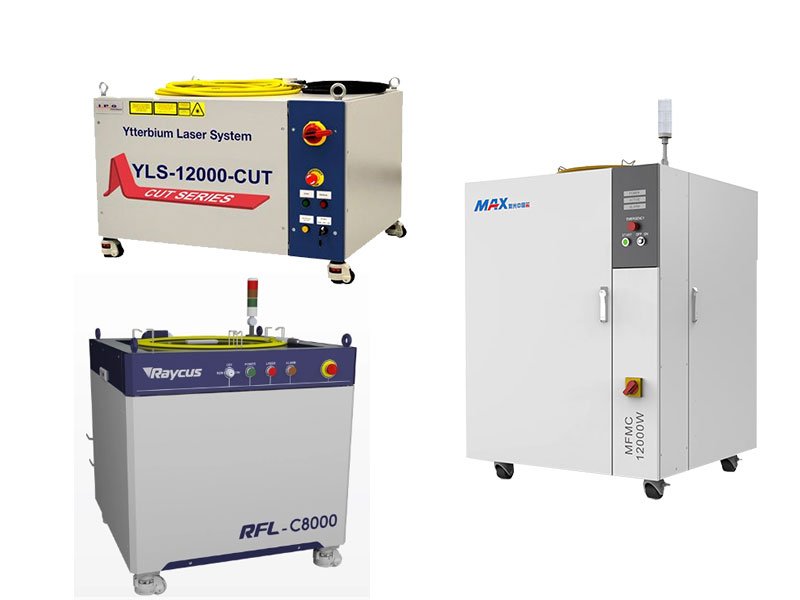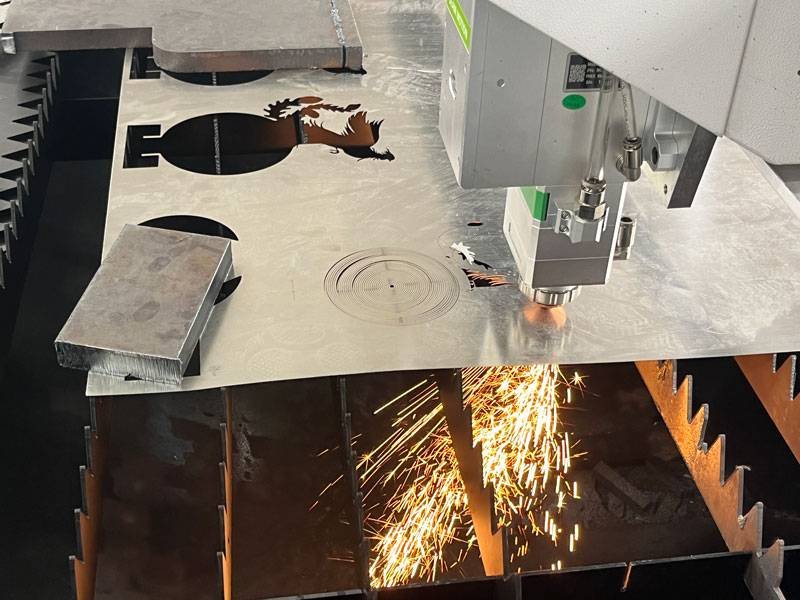In the industrial market, there are many types of lasers. Many customers have questions about this area when purchasing laser cutting equipment. This article focuses on describing the differences between fiber lasers vs diode lasers. I hope it will be helpful to you.

Diode vs co2 vs fiber laser
Fiber lasers are the core components used in industrial laser equipment and are an industrial instrument. Laser diodes are small devices (many packaging forms, including TO packaging, butterfly packaging 14 pins, etc.). Laser diodes are semiconductor devices, while lasers can be gas lasers, liquid lasers, or solid-state lasers.
Laser diodes are components (small devices that encapsulate PN junctions), which are small in size and cannot work independently. When laser diodes are equipped with power and control systems, they become semiconductor lasers. Lasers are instrument products that have their own power supply and controller, and can work as long as they are connected to 220V or 110V electricity.
| Aspect | Fiber Laser | Diode Laser |
|---|---|---|
| Construction | Uses optical fibers doped with rare earth elements like erbium or ytterbium. | Based on semiconductor diodes, often made from gallium arsenide. |
| Efficiency | Highly efficient with minimal power loss, leading to lower energy consumption. | Moderately efficient but generally consumes more energy than fiber lasers. |
| Power Output | Can achieve extremely high power outputs, ideal for industrial applications. | Limited power output, suitable for less demanding applications. |
| Beam Quality | Produces high-quality beams with excellent focus and precision. | Beam quality can vary, often less precise than fiber lasers. |
| Cooling Requirements | Efficient cooling systems are often required for high-power operations. | Typically requires less cooling, especially at lower power levels. |
| Lifespan | Longer lifespan due to robust construction and lower wear and tear. | Generally shorter lifespan, more susceptible to degradation over time. |
| Maintenance | Requires minimal maintenance, reducing downtime and operational costs. | May require more frequent maintenance, especially in demanding environments. |
| Applications | Used in metal cutting, welding, marking, and other industrial processes. | Commonly used in printing, medical devices, and consumer electronics. |
| Cost | Higher initial cost, often offset by lower operating expenses. | Lower initial cost, but can incur higher long-term expenses due to maintenance. |
| Scalability | Easily scalable for larger projects and increased production demands. | Less scalable, typically used for specific and smaller-scale applications. |

The relationship between diode laser vs fiber laser
Laser diode is a component of fiber laser (maybe part of laser), it emits near-infrared laser, which can be basically used in computer optical drives, printers and other translation products.
Fiber laser vs diode laser have different principles:
In principle, they are both electron transitions and stimulated radiation.
Laser: The transition is formed between two energy levels.Laser diodes are between energy bands. It cannot be said that laser diodes are lasers. If they meet the three major elements of lasers (medium, resonant cavity, excitation source), they are lasers.
From the perspective of carrier distribution under thermal equilibrium conditions: lasers meet Boltzmann distribution, and laser diodes meet Fermi-Dirac distribution.

Diode laser vs fiber laser application
Laser diodes are usually used in applications that require lower output power, such as fiber-optic communications, medical beauty, security, etc.
Fiber lasers may be more suitable for applications that require higher output power, such as material processing, scientific research, etc.
How to choose diode laser vs fiber laser
Industrial Applications: If your project involves high precision and high power, metal cutting or welding, a fiber laser may be a better choice due to its efficiency, beam quality, and scalability.
Consumer Electronics or Telecommunications: For applications where compact size and moderate power are sufficient, optical communications or medical devices, compact size and moderate power are sufficient, such as optical communications or diode lasers may be more suitable.
Budget Cost: Consider your budget and maintenance costs before purchasing. The upfront cost of a fiber laser source is higher, but durability and low maintenance will save money over time.
Diode lasers have a lower initial investment, but may incur additional costs due to maintenance and replacement.
Environmental Impact: If energy efficiency and environmental sustainability are priorities, fiber lasers offer superior efficiency and reduced power consumption, in line with green initiatives.
Conclusion
The main differences between laser diodes and lasers are their structures, applications, and characteristics. Laser diodes play an important role in many fields due to their high efficiency, miniaturization, and long life. Lasers, however, are more common in applications that require greater power due to their higher output power.
